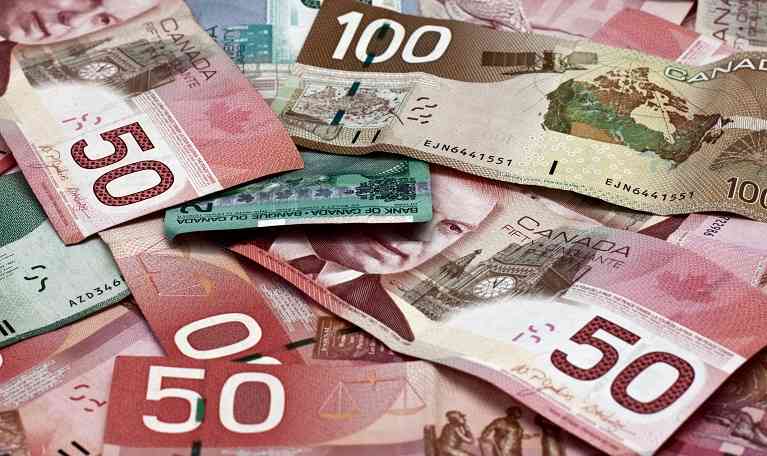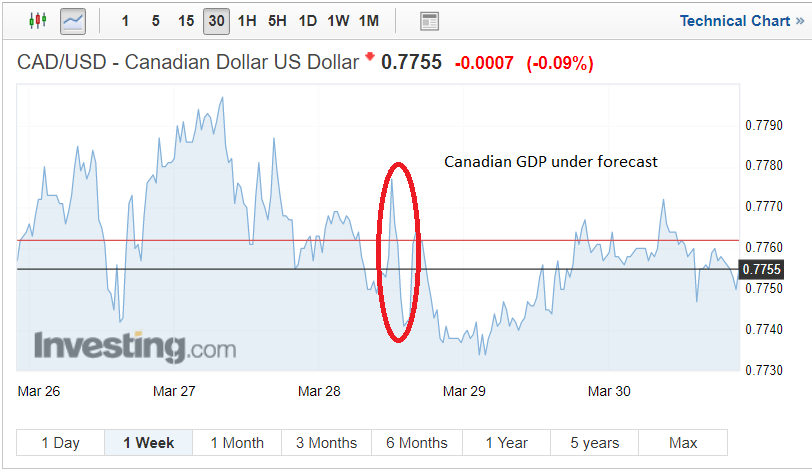Canadian GDP missed target this month compounding the Canadian Dollar’s troubles this week. The Canadian Dollar has struggled recently due to few developments in the new NAFTA agreements plus earlier Q4 GDP figures.

Markets had been looking towards this week’s data to potentially highlight an anomaly in the Q4 GDP, however, rather than put investor at ease the latest data could potentially be highlighting a trend. Canadian month on month GDP had been forecast to increase by 0.1% but instead contracted by -0.1%. Key reasons for the contraction included the real estate market and oil production.
Canadian real estate market cooling
The Canadian property purchase and rental market cooled by 0.5%, real estate brokers reported higher levels of interest in the final months of 2017 in anticipation of tighter lending criteria. Demand in January dropped significantly and signalled a decline in output by 12.8% the greatest drop since November 2008.
Existing Canadian property sales fell 14.5% in January this year; another 6.5% last month. To coincide with the eased demand and the Canadian Real estate association has revised its market outlook significantly and now predicts a drop-in sales of around 7.8% this year, with the average house price easing to C$ 498,000 a slump of 2.3%.
Fall in oil and gas production
Energy contributed to the downturn in Canadian GDP with gas and oil extraction dropping 3.6%, overall the mining and oil and gas extraction demonstrated the largest drop since May 2016 falling 2.7% in January.
Bank of Canada’s next move
Many economists remain buoyant about Canada’s growth despite the slip in recent GDP figures. Canada’s GDP remains on track to reach 1.4% in the first quarter. This blip in part has been put down to reduced oil extraction which is anticipated to be a momentary lapse due to unscheduled maintenance rather than longer-term production issues.
Canadian 2018 growth forecasts were revised up in the middle of the month to 2.2 from 2.1 percent which arguably could have been too soon. The recent optimism fuelled by global growth which in turn should equate to greater investment and trade. Canadian growth in 2019 is expected to decrease to 2 percent in 2019.
Whilst the Bank of Canada might be playing coy about the next rate rise they are still expected to raise rates twice this year. Investors expect the next interest rate rise to take place in July taking the interest rate to 1.50%
Canadian Dollar trend
Th Canadian Dollar gained against its US counterpart in the lead up to the GDP data moving to 0.7777 however the loonie was sold aggressively after the GDP data was released with the CAD/USD falling to 0.7741.
The pair has recovered somewhat due to the news that NAFTA had picked up the pace, some experts anticipate that the Canadian Dollar could appreciate up to 7% against the US dollar if a deal could be struck, however if unsuccessful the loonie has been forecast to lose up to 20%. The next round of NAFTA talks will take place this month and remain key to the Canadian Dollar outlook.
Possibility the Canadian Dollar could bounce back
With the ultimate outcome of NAFTA negotiations still hanging in the balance, this poses the greatest threat to the loonie. Another worry will come in the shape of higher interest rates which will eat into the finance of those that dined out on cheap credit post-financial crisis. Whilst the updated growth figures seem attainable a good NAFTA talks outcome for Canada remains the key to the loonie.
